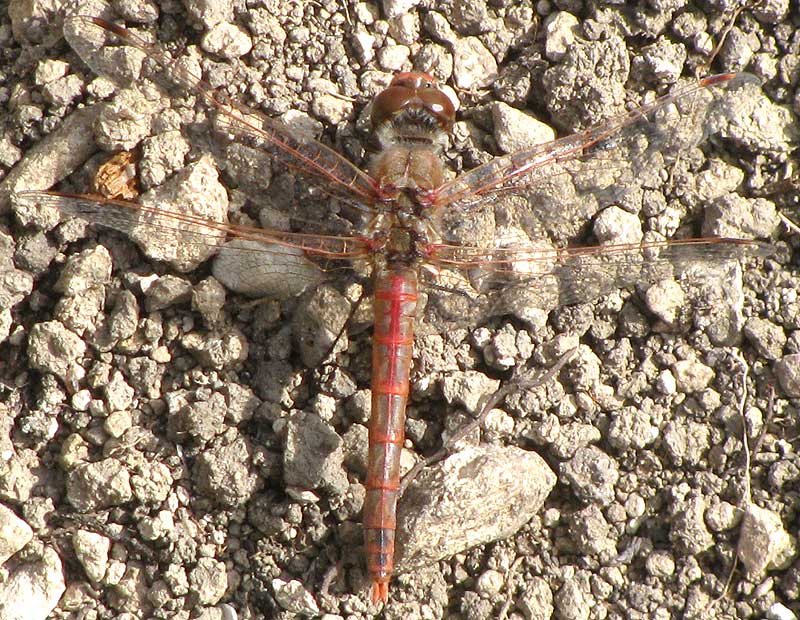Excerpts from Jim Conrad's
Naturalist Newsletter

from the December 8, 2013 Newsletter issued from the Frio Canyon Nature Education Center in the valley of the Dry Frio River in northern Uvalde County, southwestern Texas, on the southern border of the Edwards Plateau; elevation ~1750m (~5750 ft); N29.62°, W99.86°; USA
MEADOWHAWK DRAGONFLY
Just below Juniper House one chilly morning this week I was digging trenches in which concrete will be poured for the new large greenhouse, when a medium-size, reddish dragonfly landed on the naked dirt that later will be the greenhouse's floor. That's him above.
Just three or four days earlier we'd suffered a hard freeze, so I was a little surprised to see a dragonfly out patrolling. Apparently he was looking for a mate, because soon another one flitted by, causing my visitor to give chase. Apparently the other one gave no satisfaction, for soon my ground-visitor returned to the same spot he'd occupied before. It was surprising that two dragonflies would appear so far from the Dry Frio, which halfheartedly flows in the valley about half a mile away.
As dragonflies go, the visitor had an especially thick abdomen, and the abdomen's markings, like red ribs, also were distinctive. These traits enabled ice-bound volunteer identifier Bea in Ontario to gleefully identify our friend as the Variegated Meadowhawk, SYMPETRUM CORRUPTUM. Variegated Meadowhawks occur in most of western North America south to central Mexico, and sometimes migrate clear to the eastern coast. Sidney Dunkle in Dragonflies through Binoculars describes the Variegated Meadowhawk as "... the dragonfly most likely to be seen in the desert miles from water."
In North America we have 13 meadowhawk species -- 13 species of the genus Sympetrum. They are thought of as small to medium-size, "perky" dragonflies who tend to forage for small prey in grassy areas.
Beyond the "red skeleton" design on the thick abdomen, an important field mark distinguishing Variegated Meadowhawks from other species is that of the reddish veins running along the leading edges of each wing. Normally veins are black.